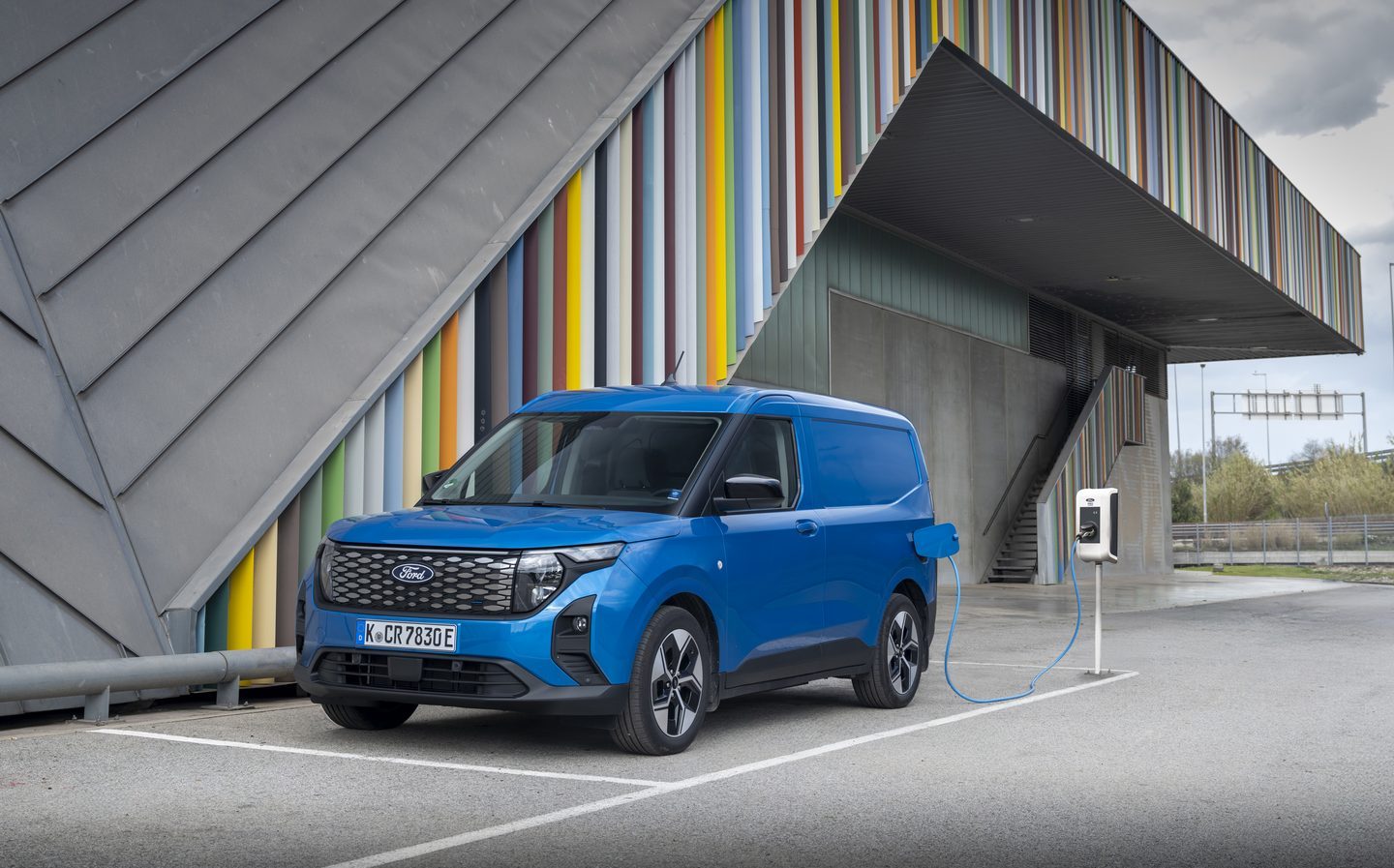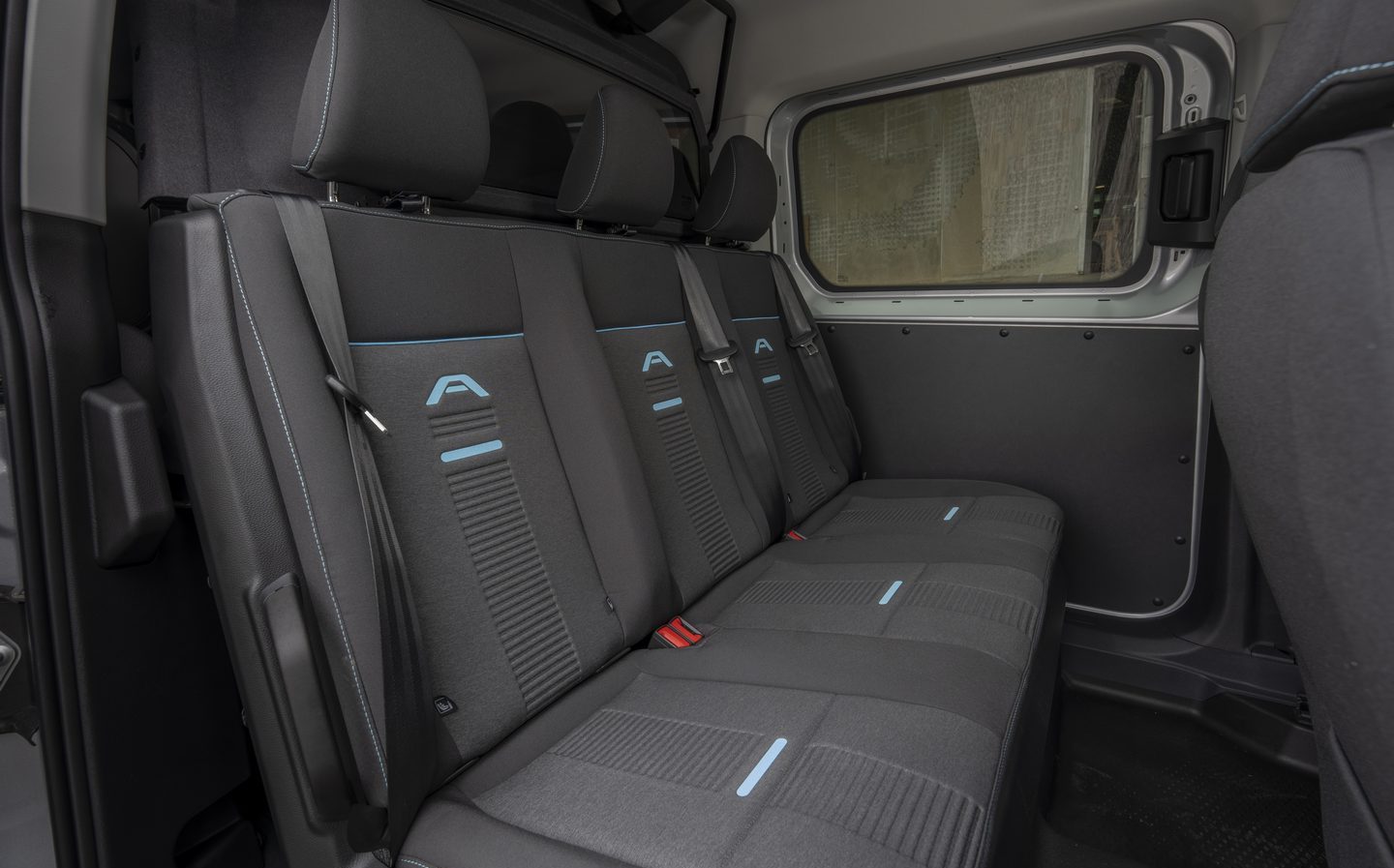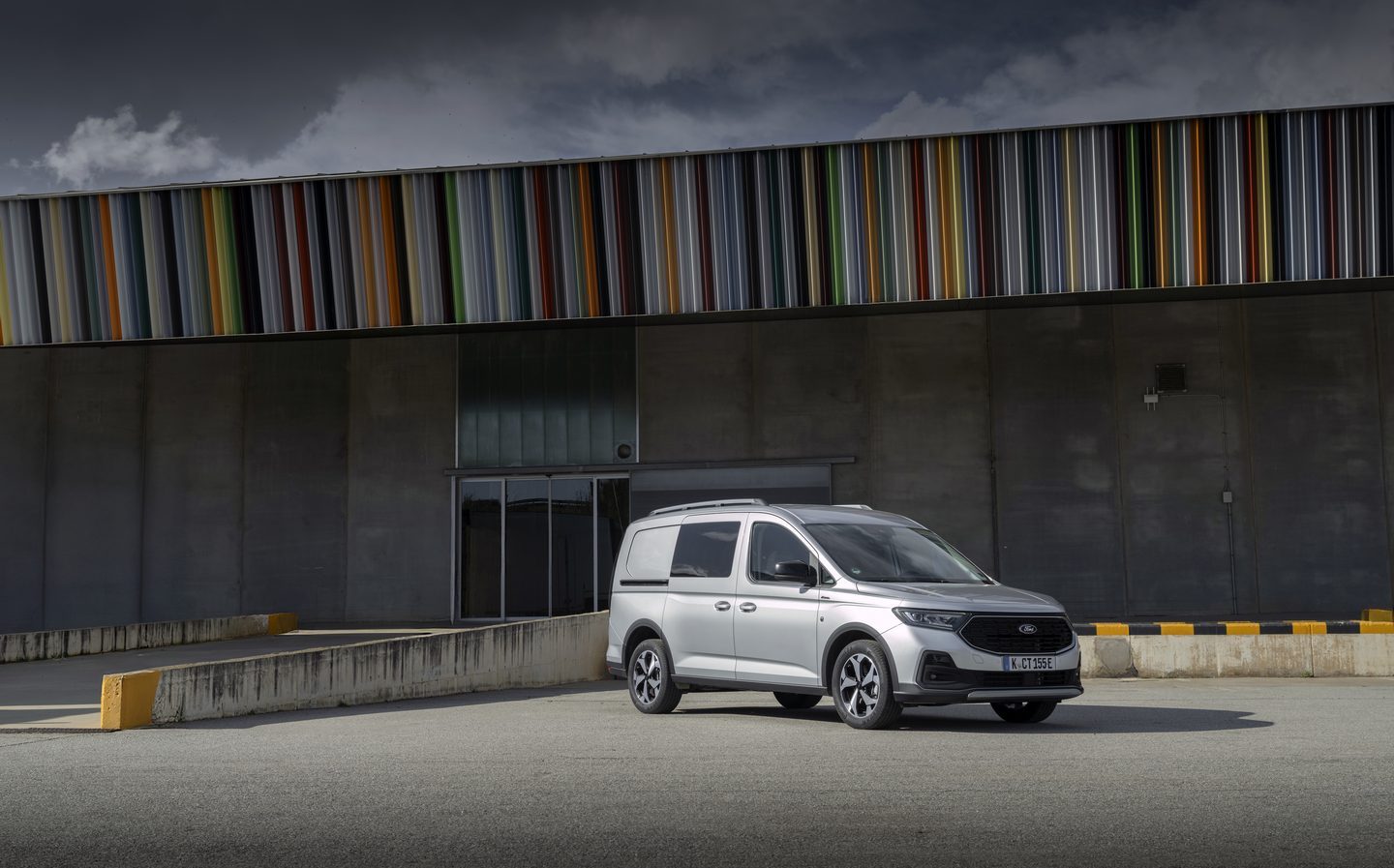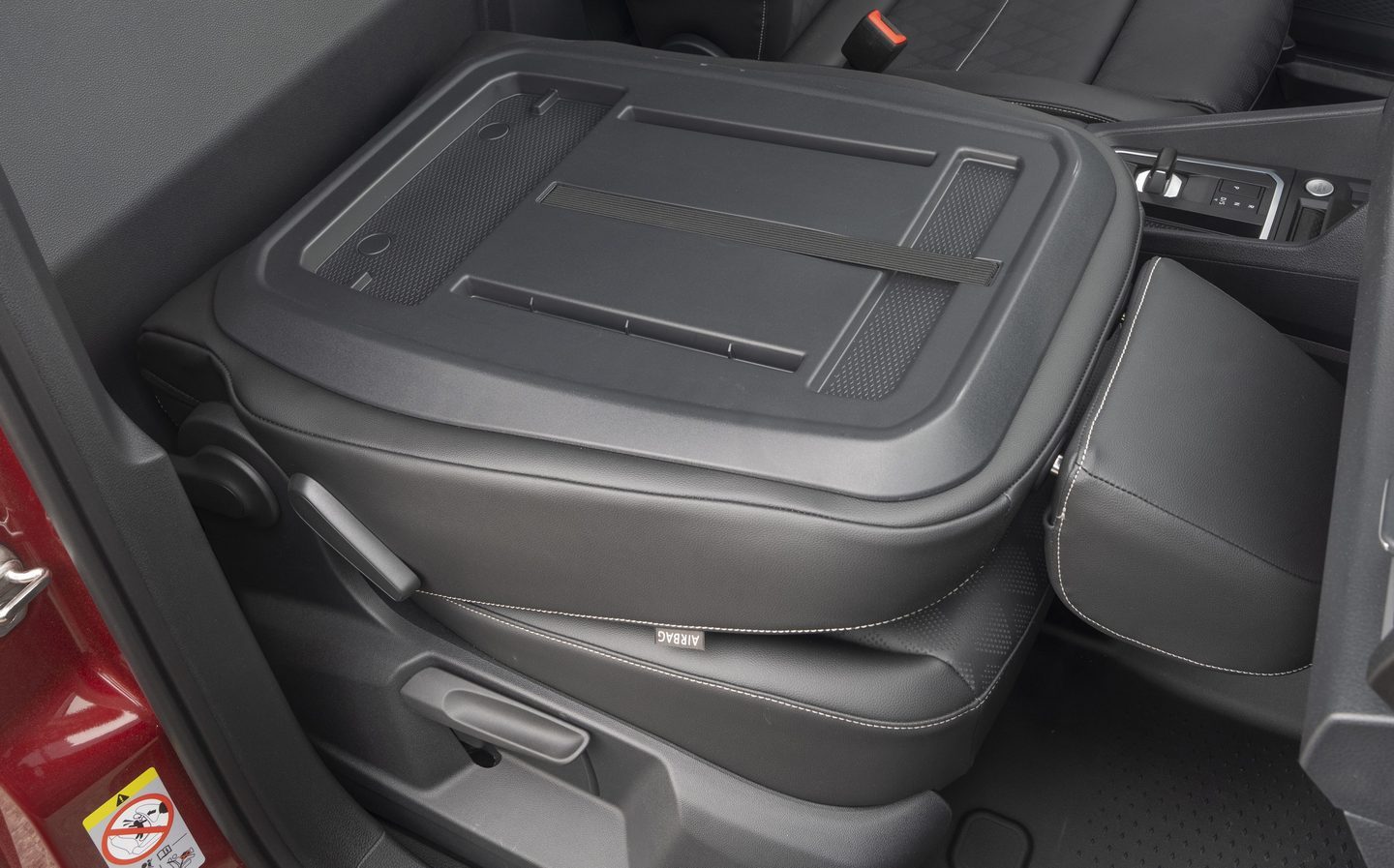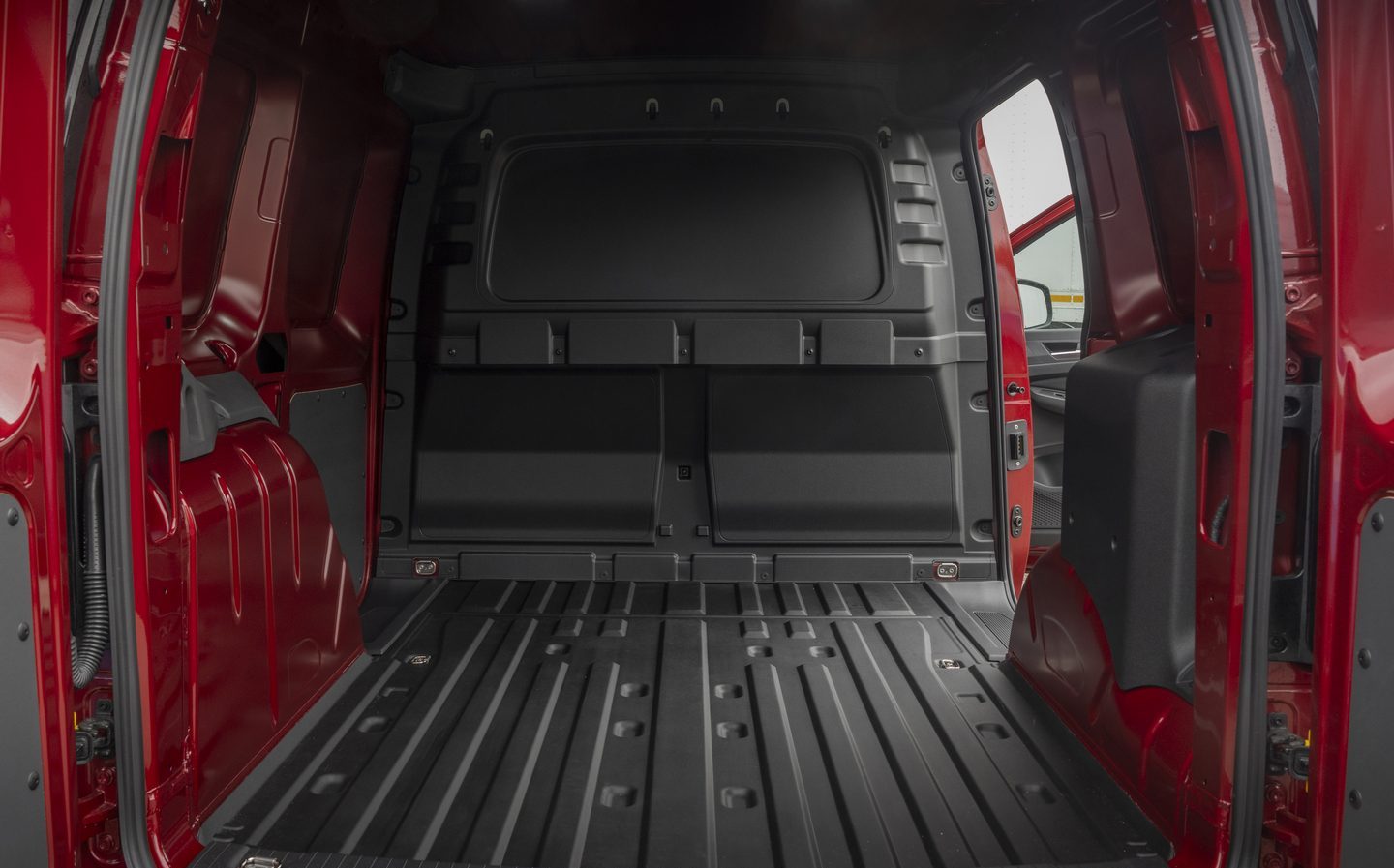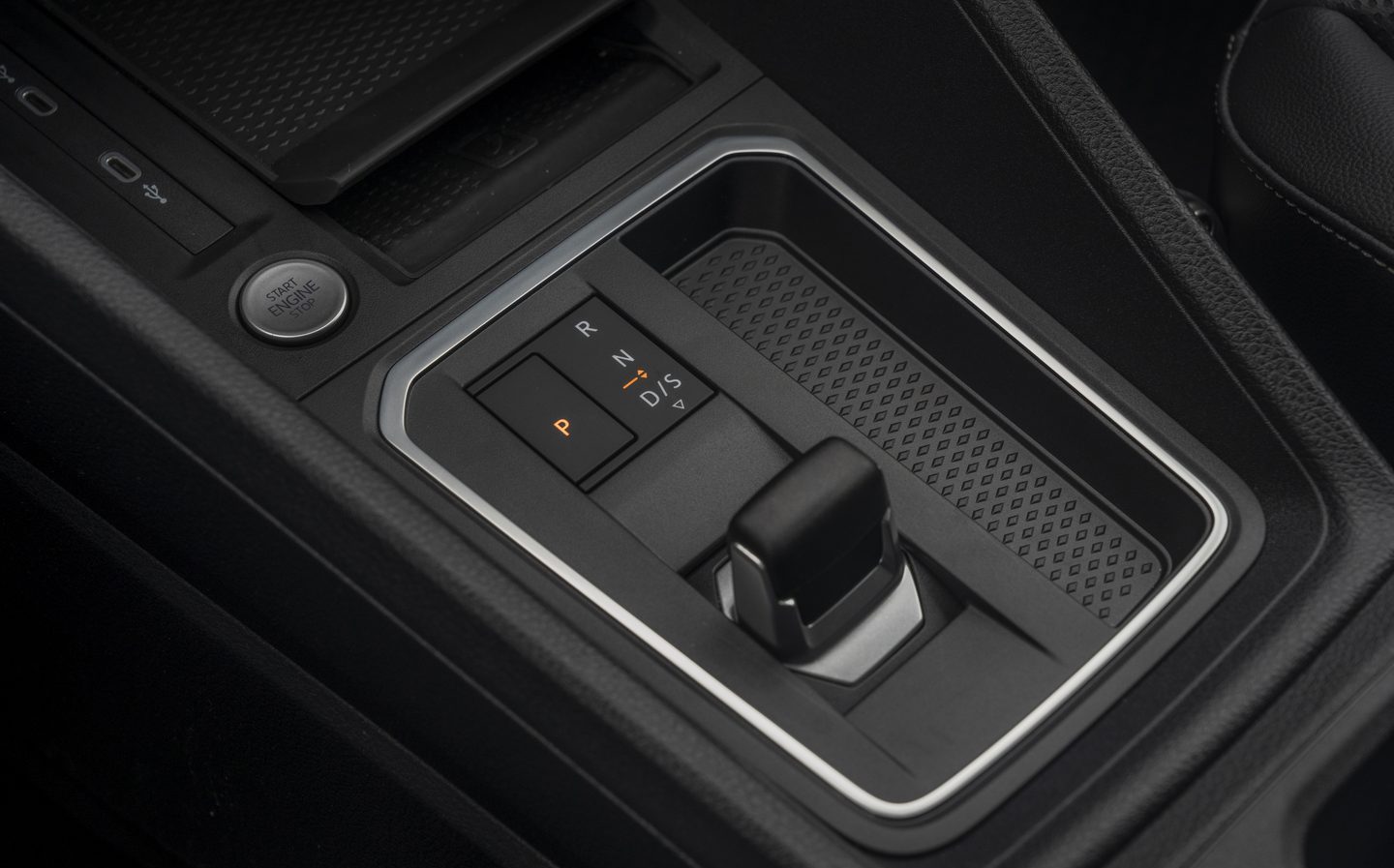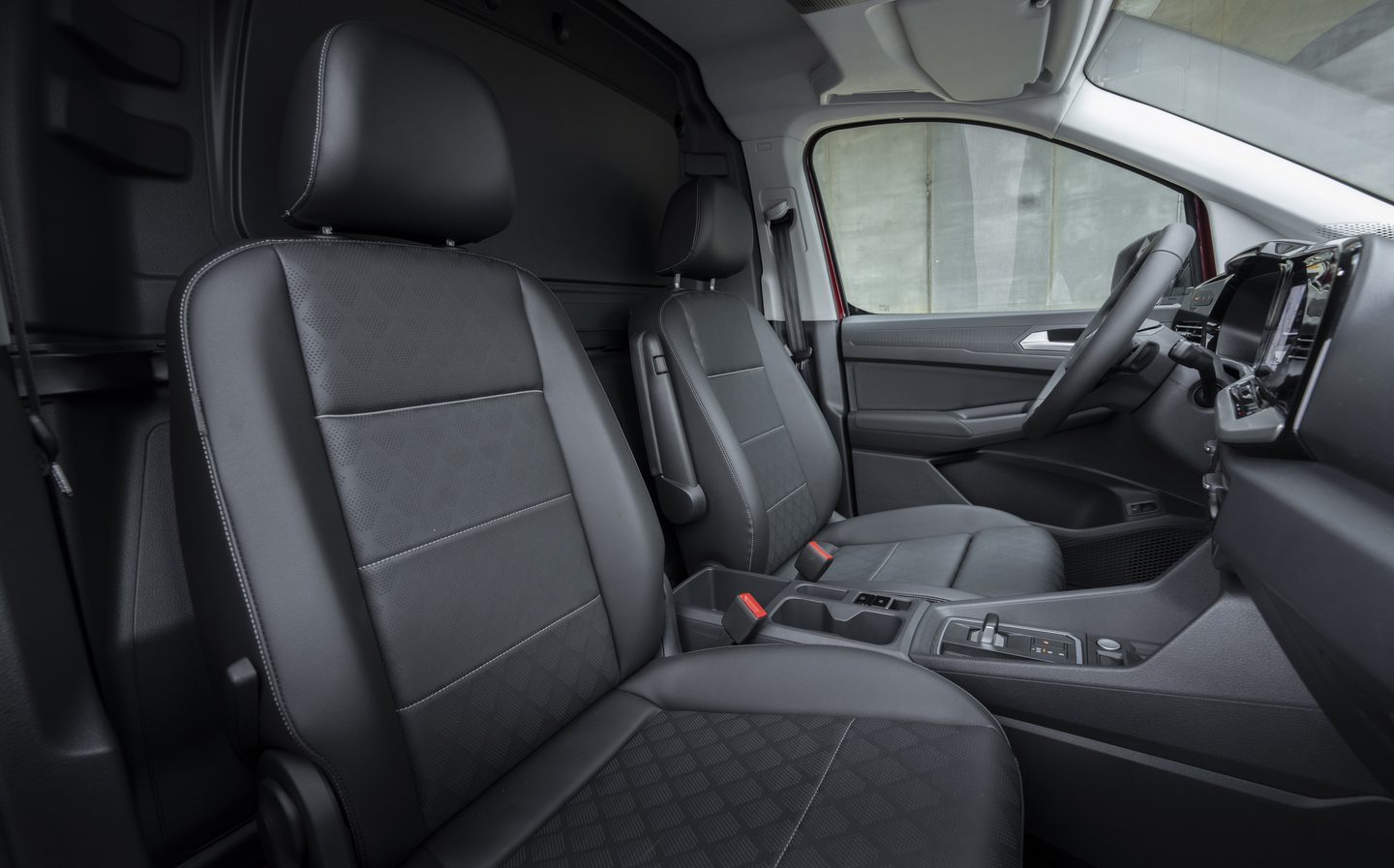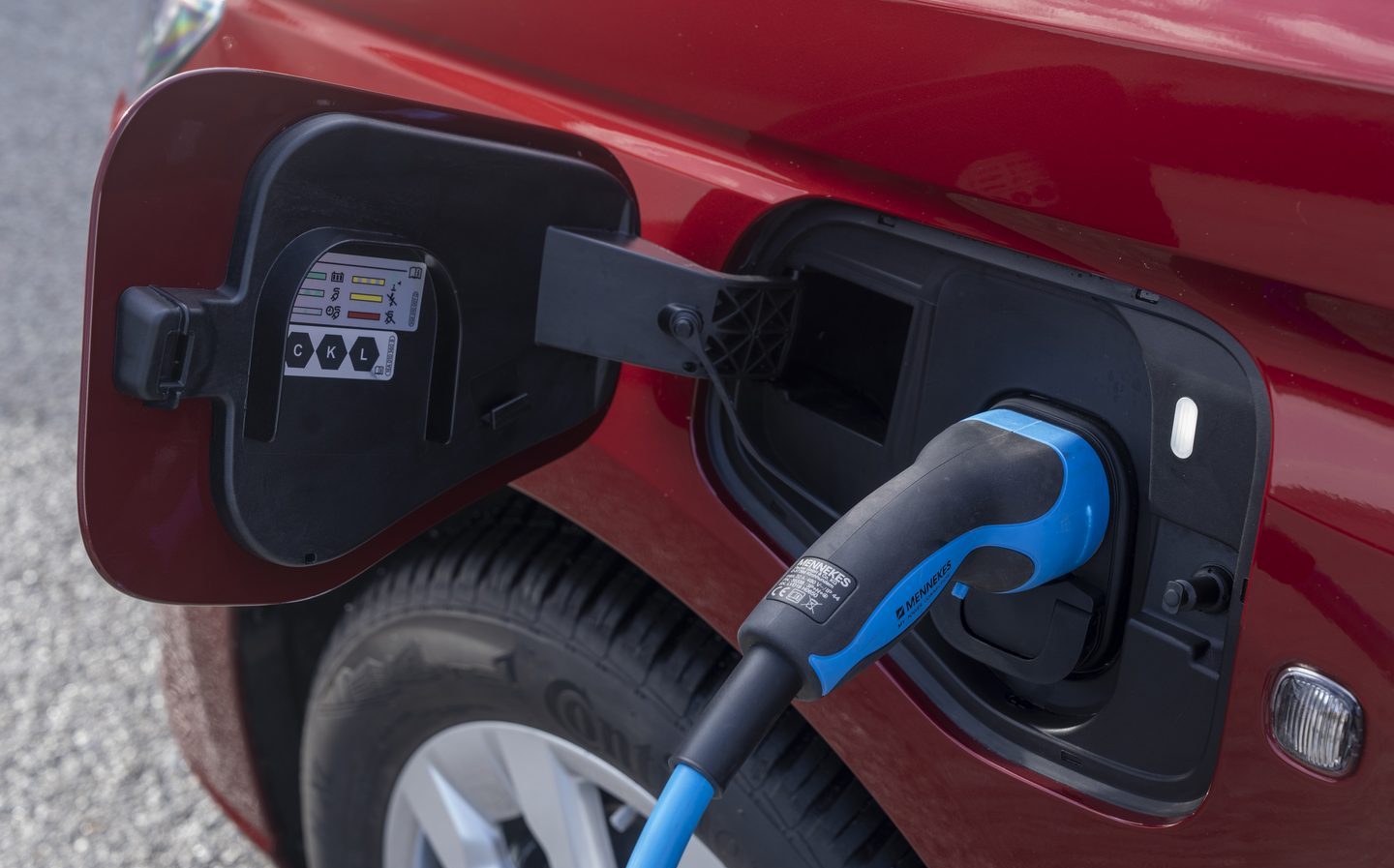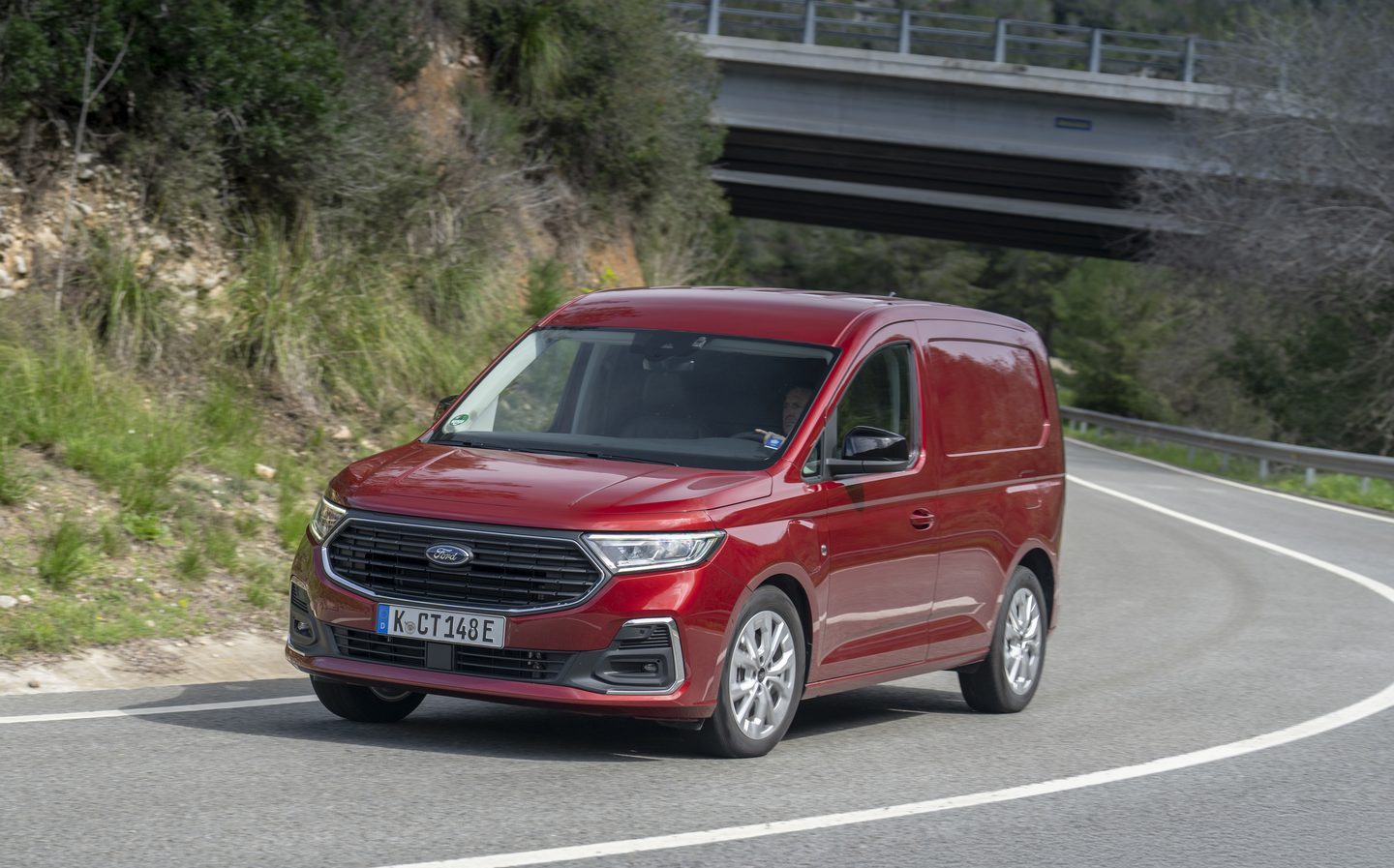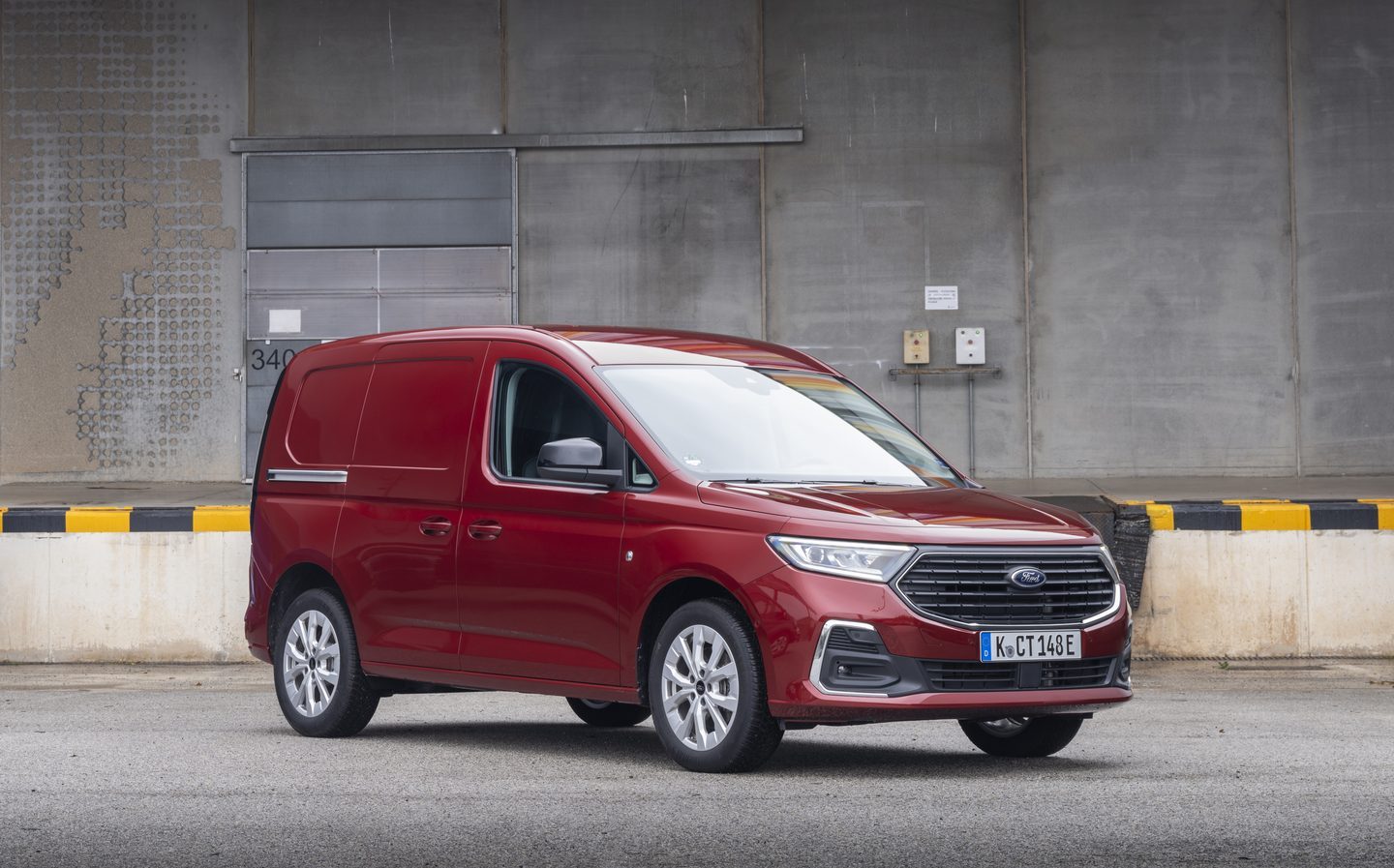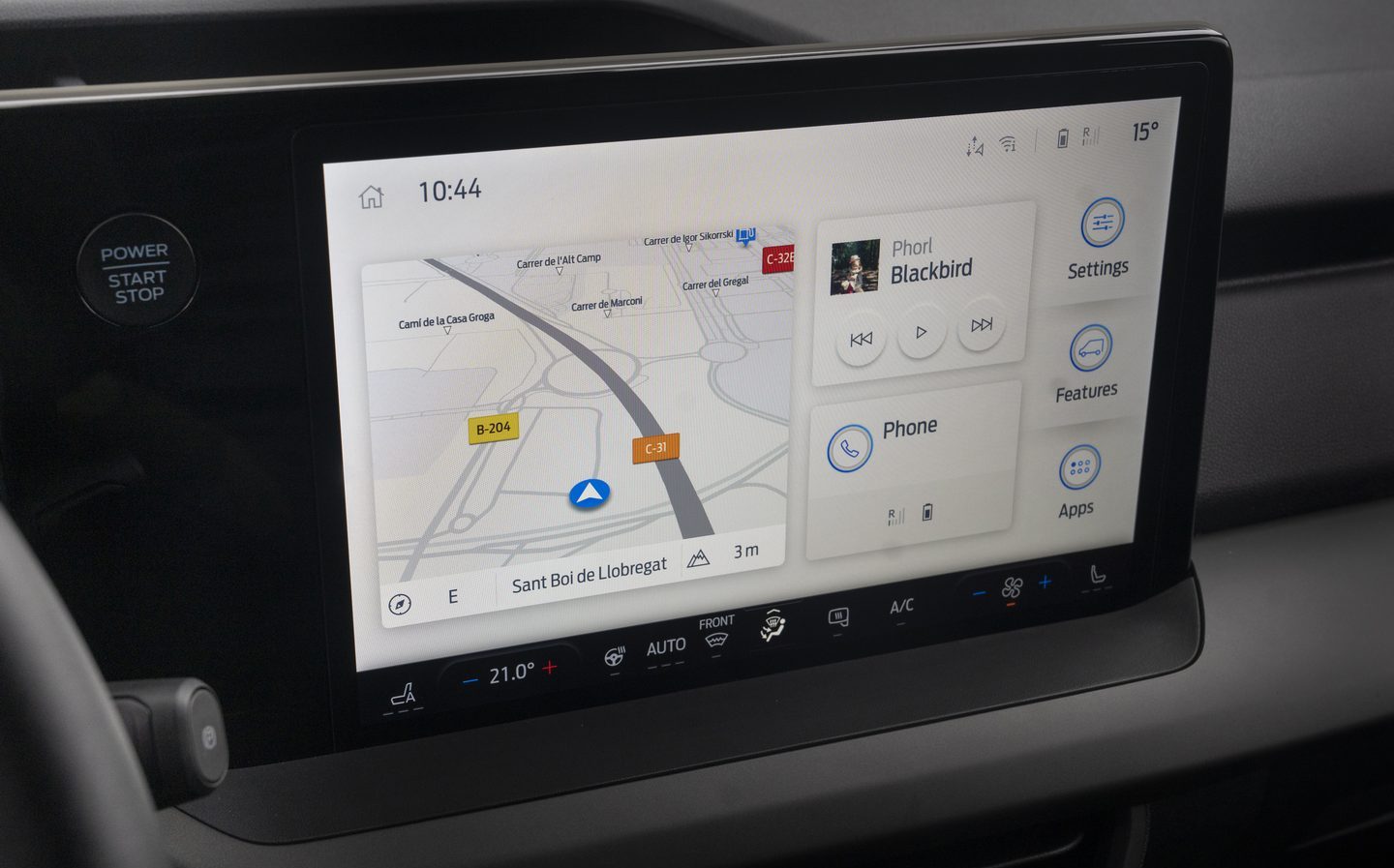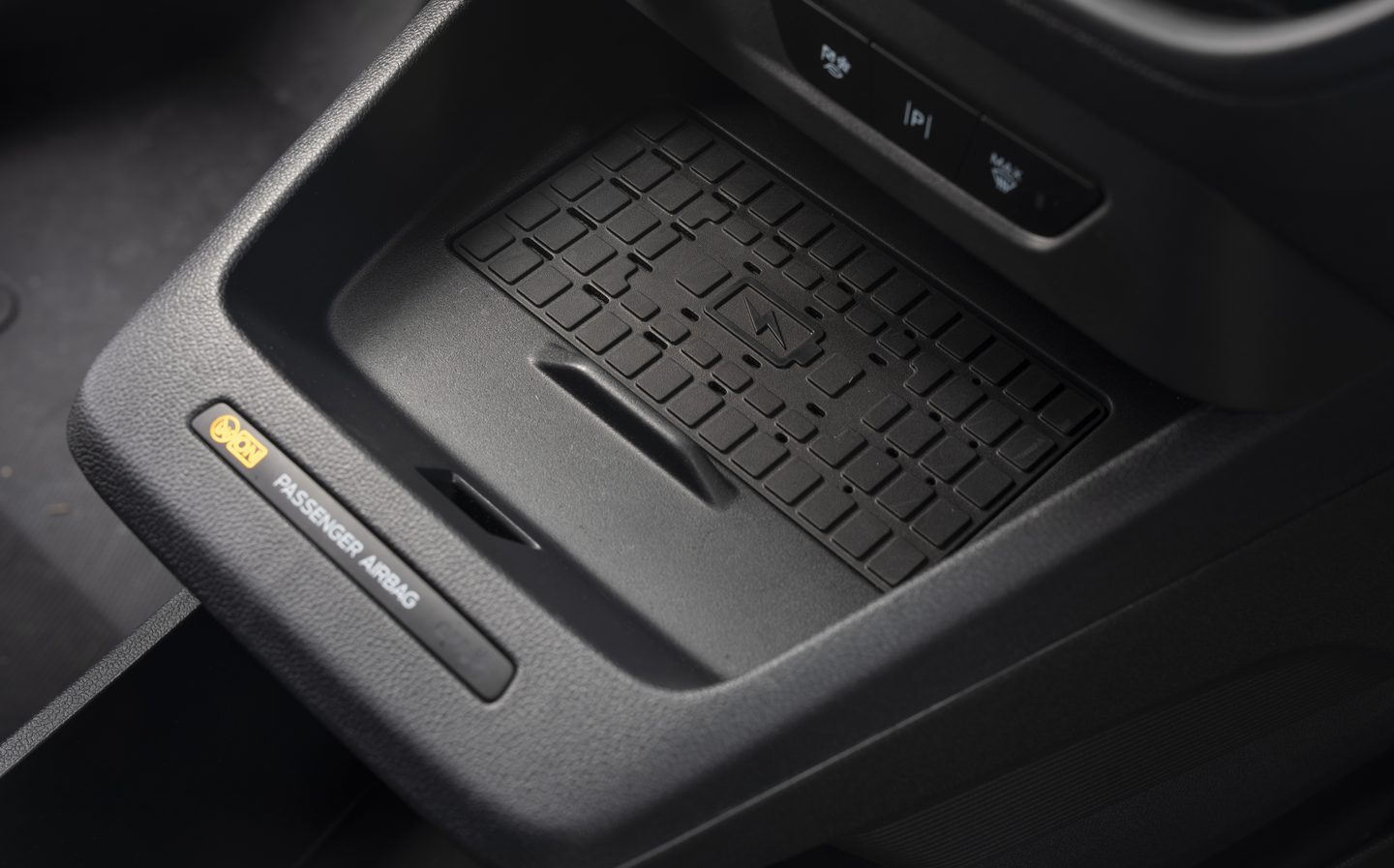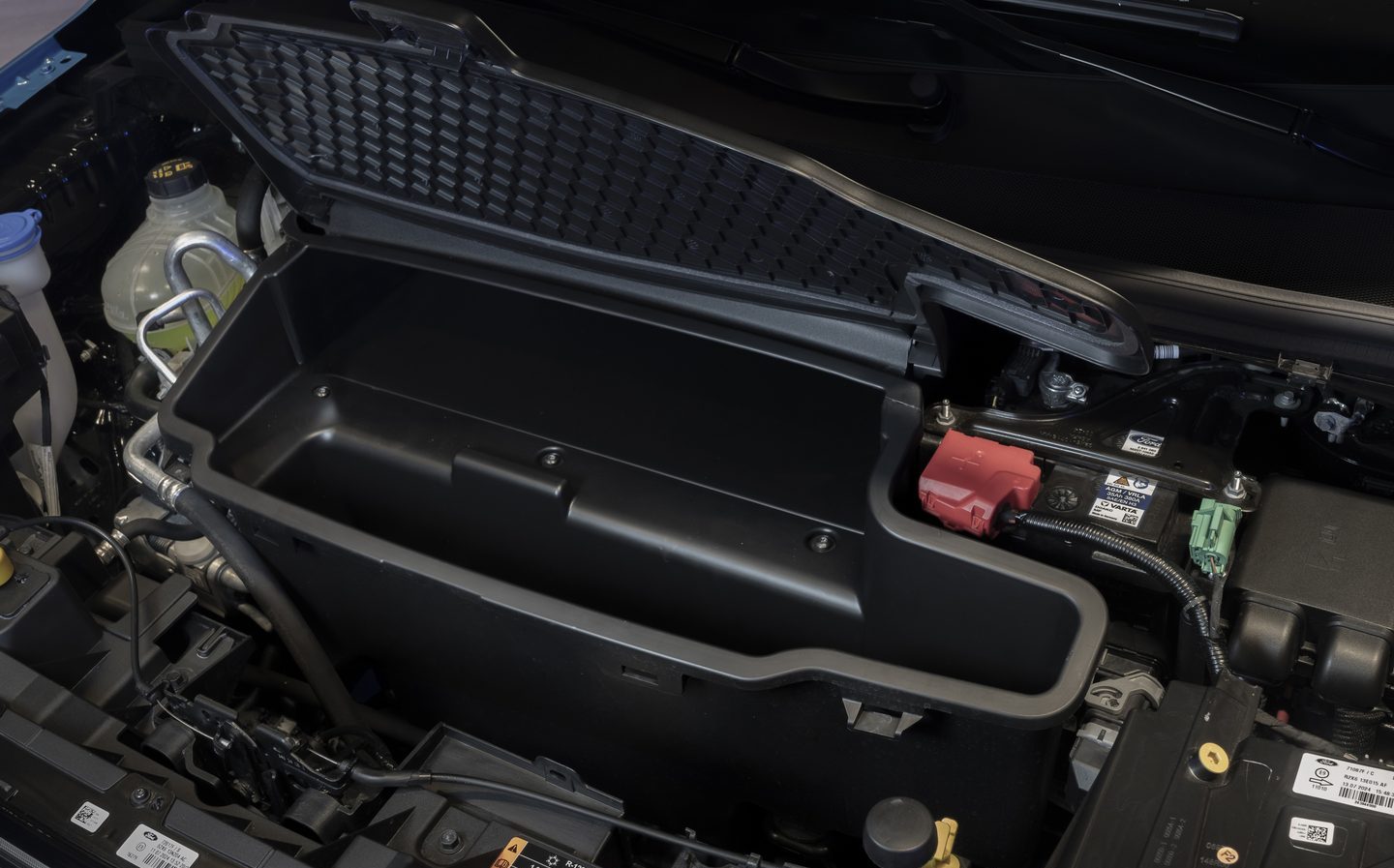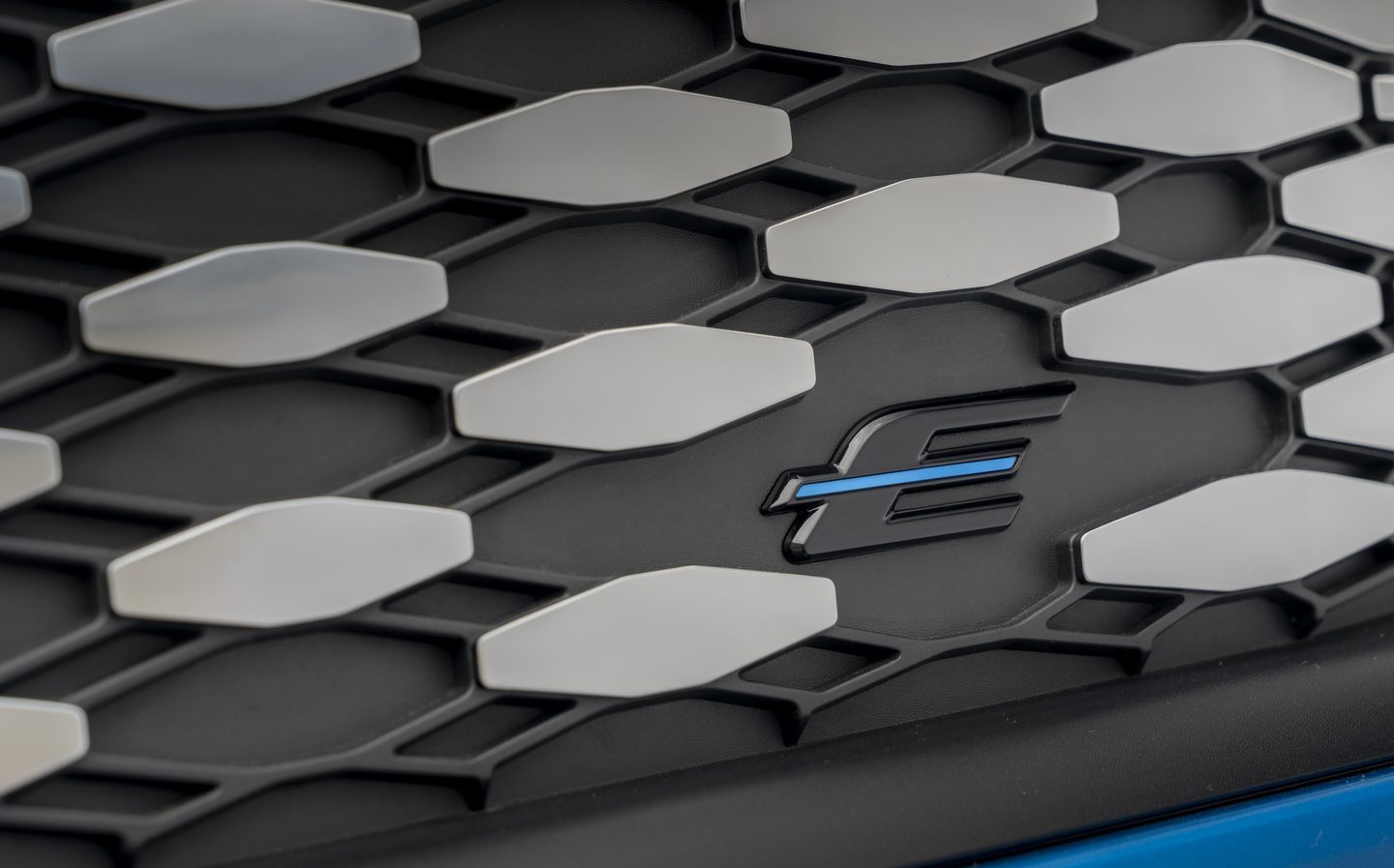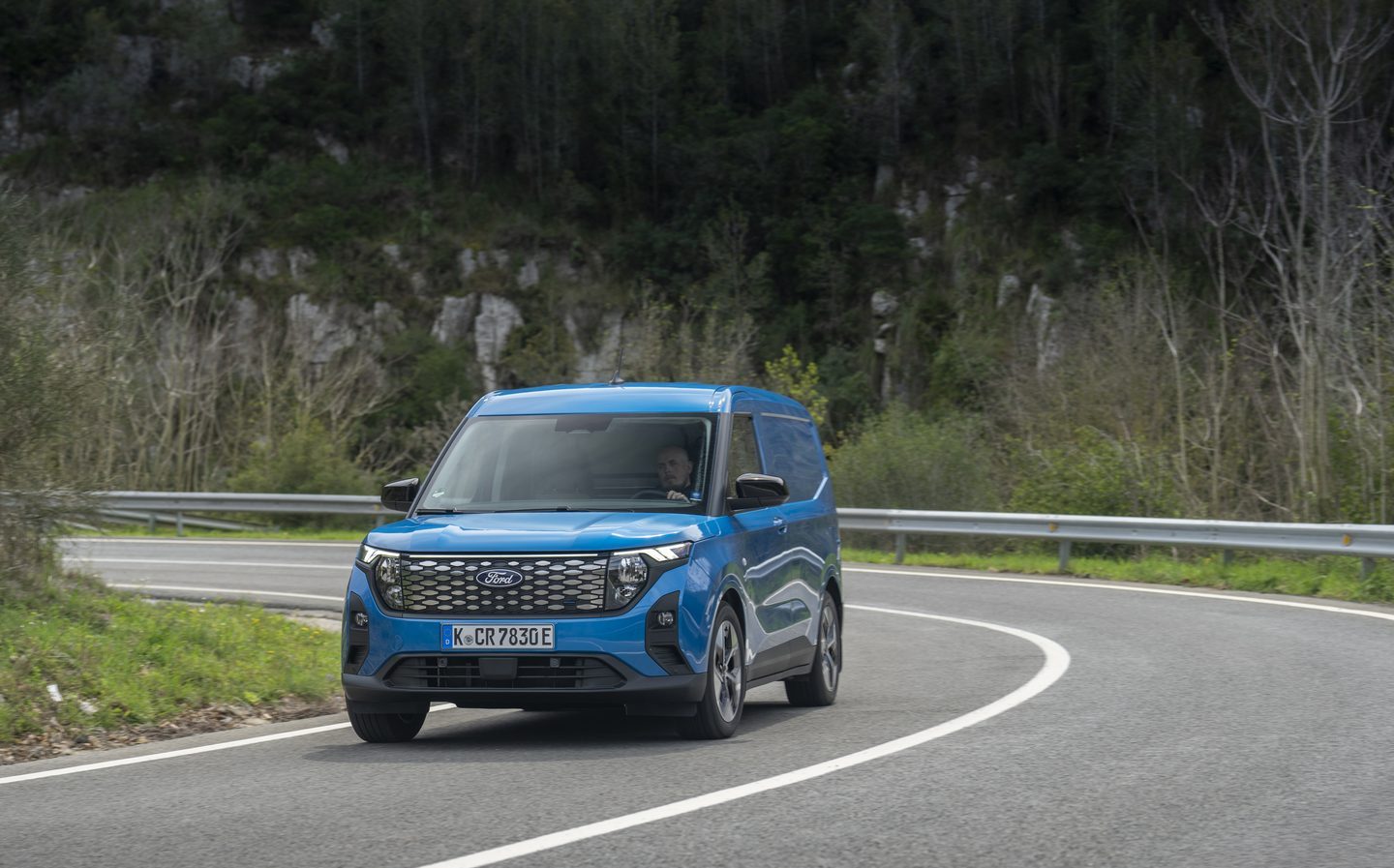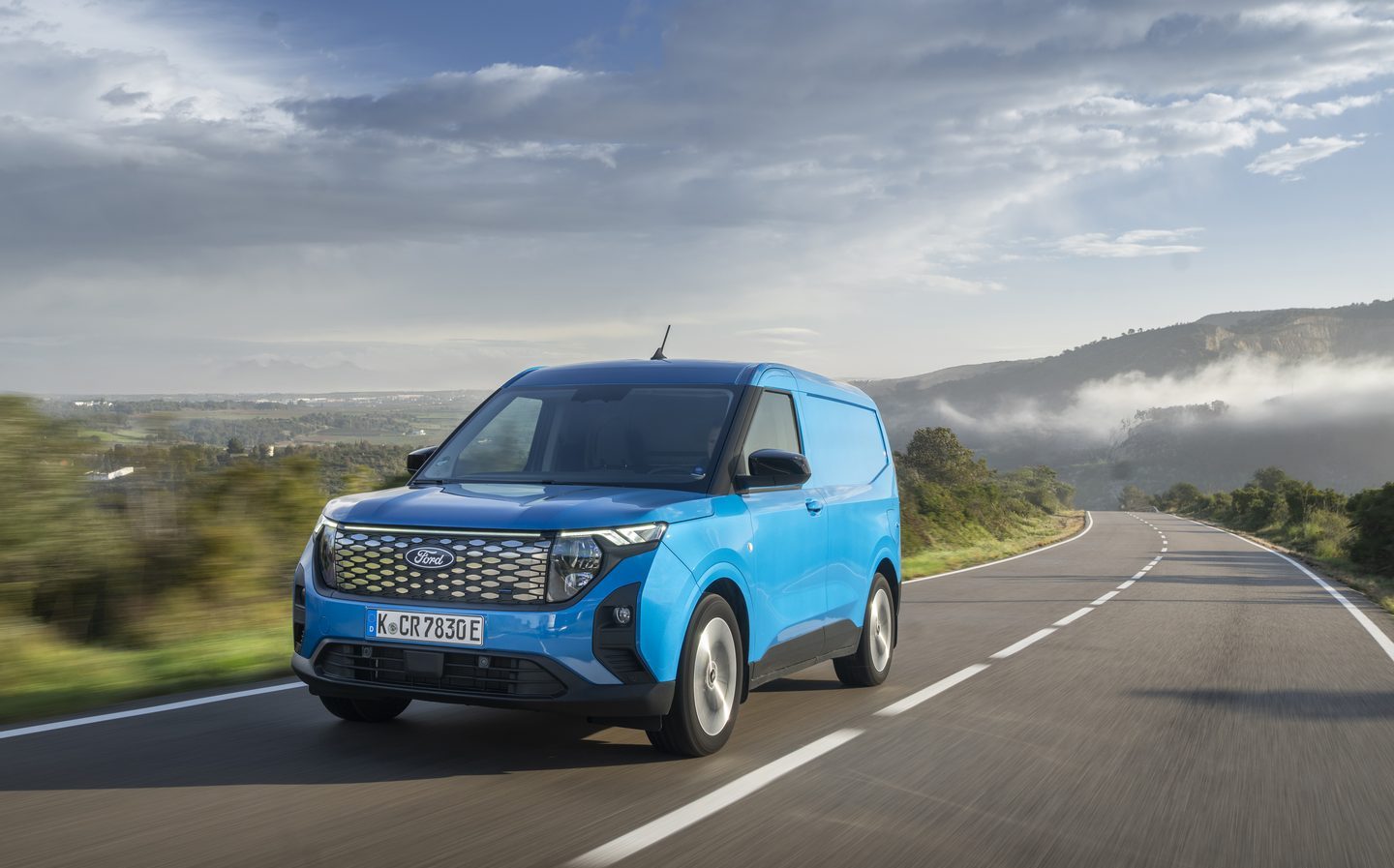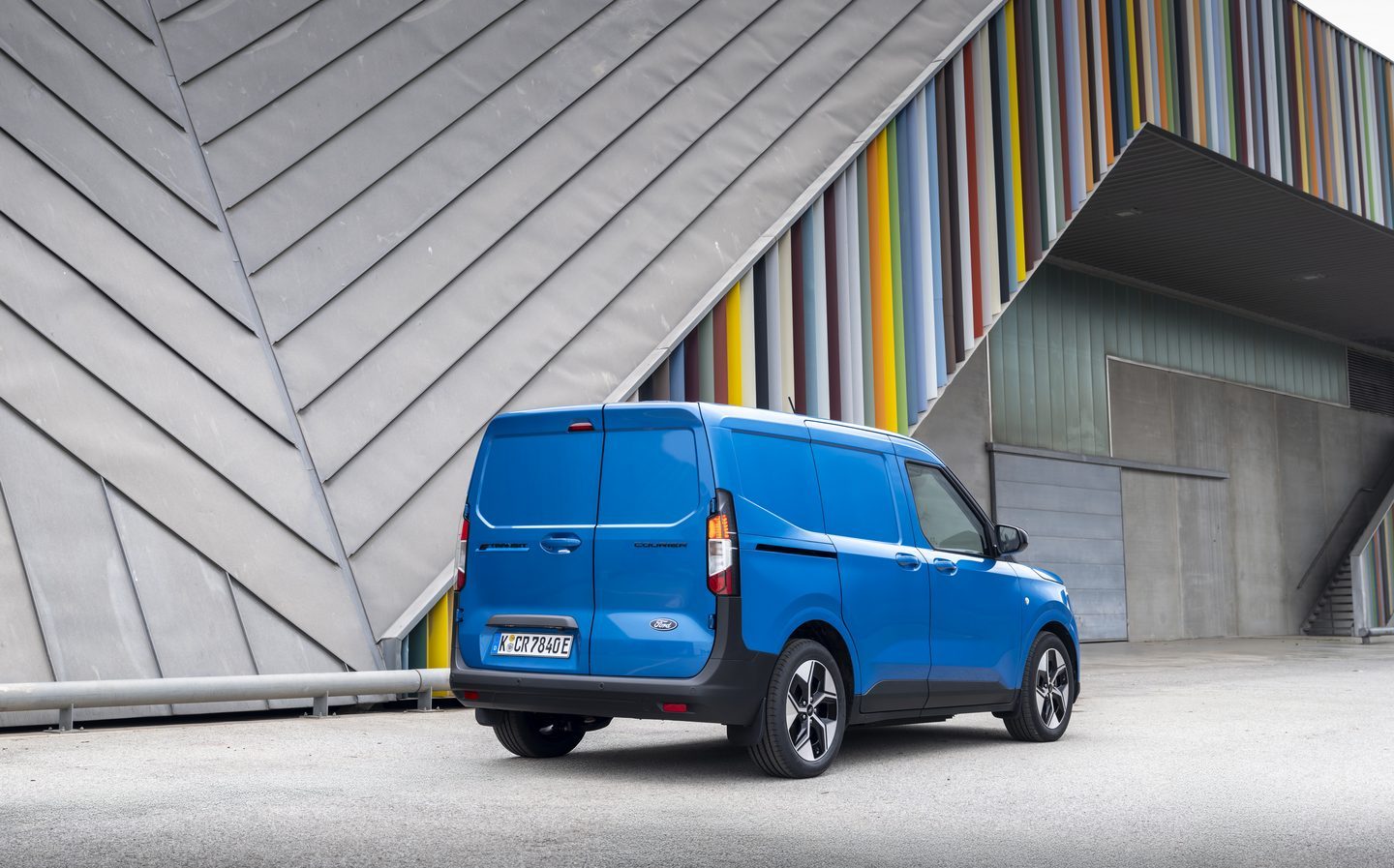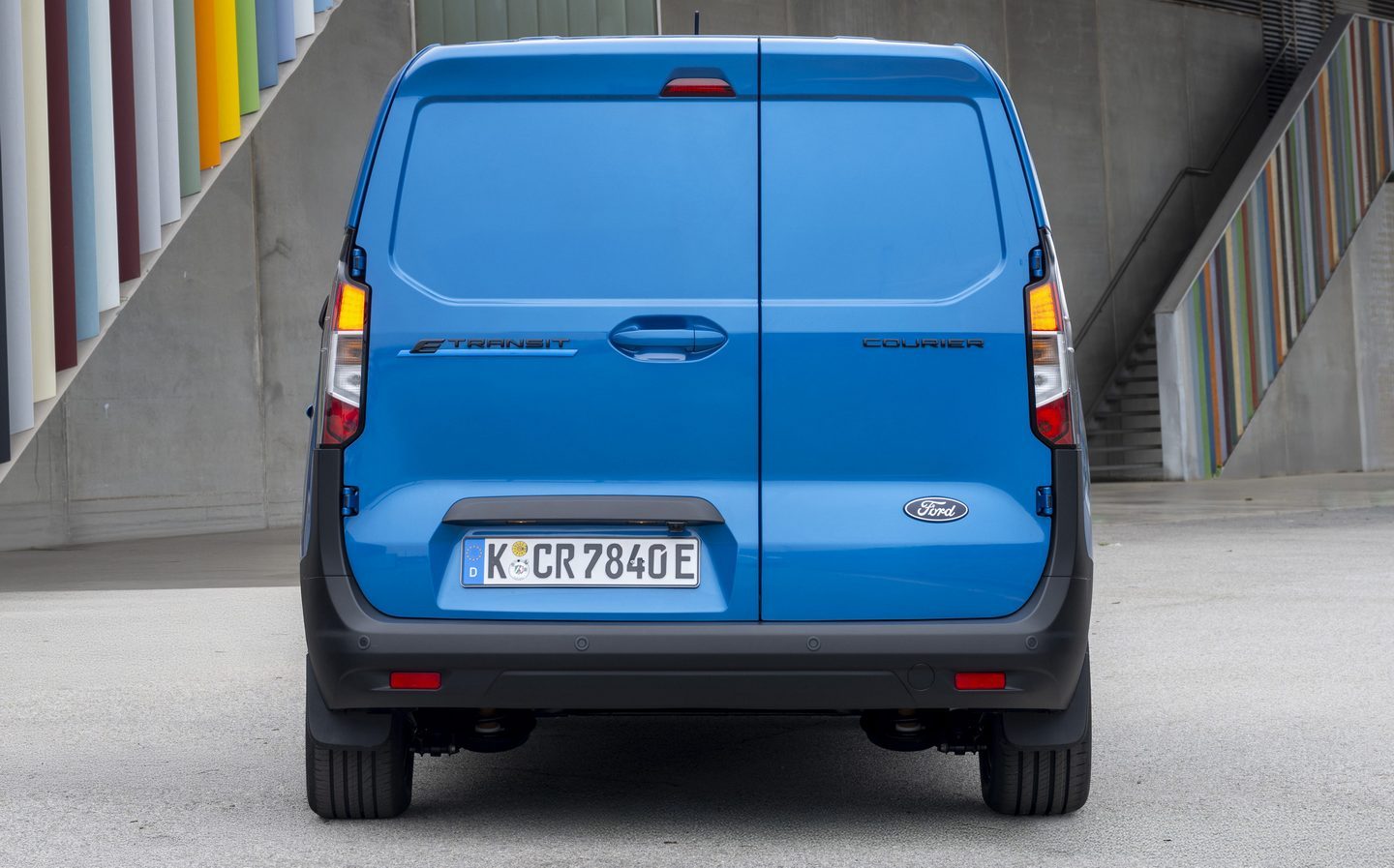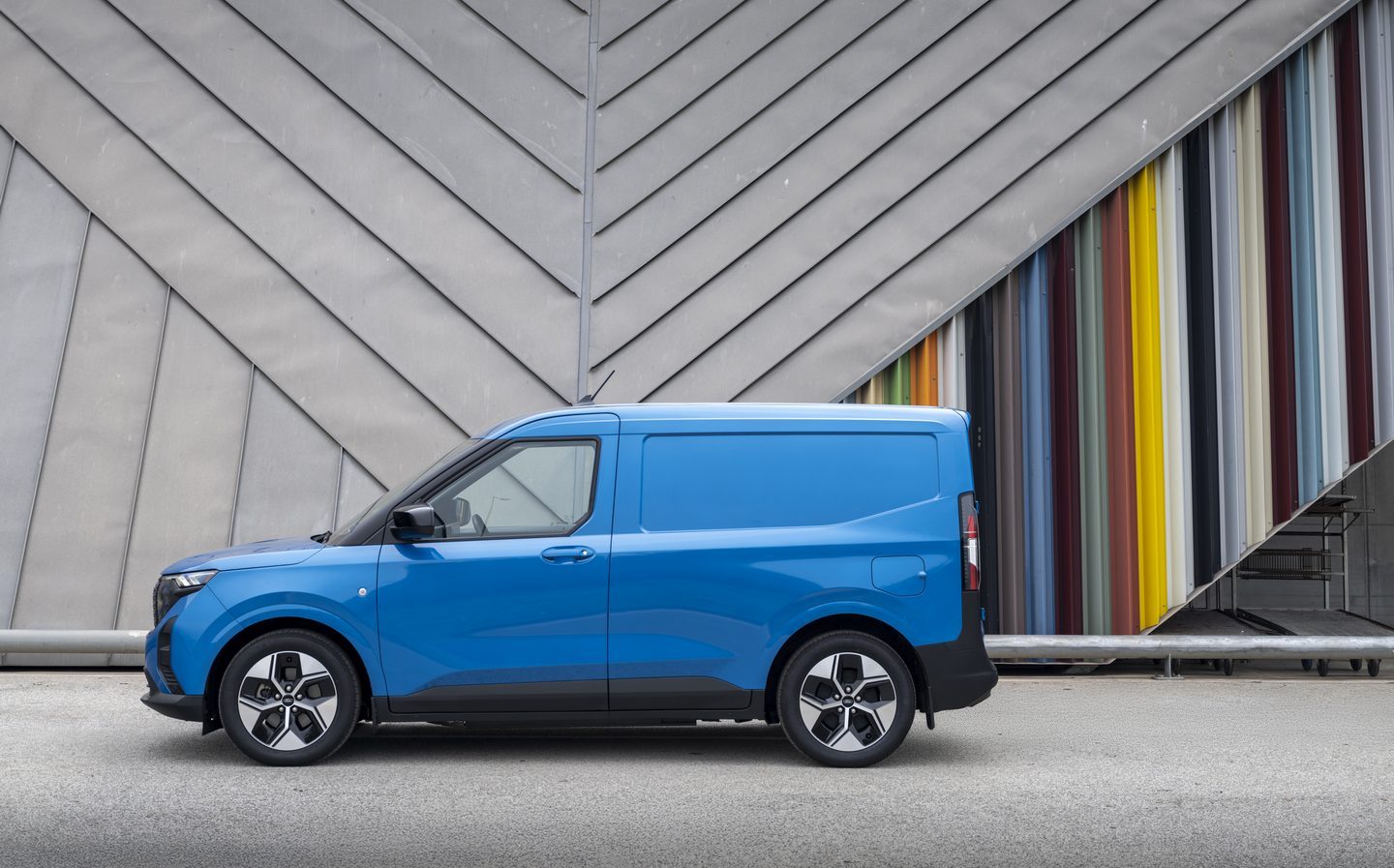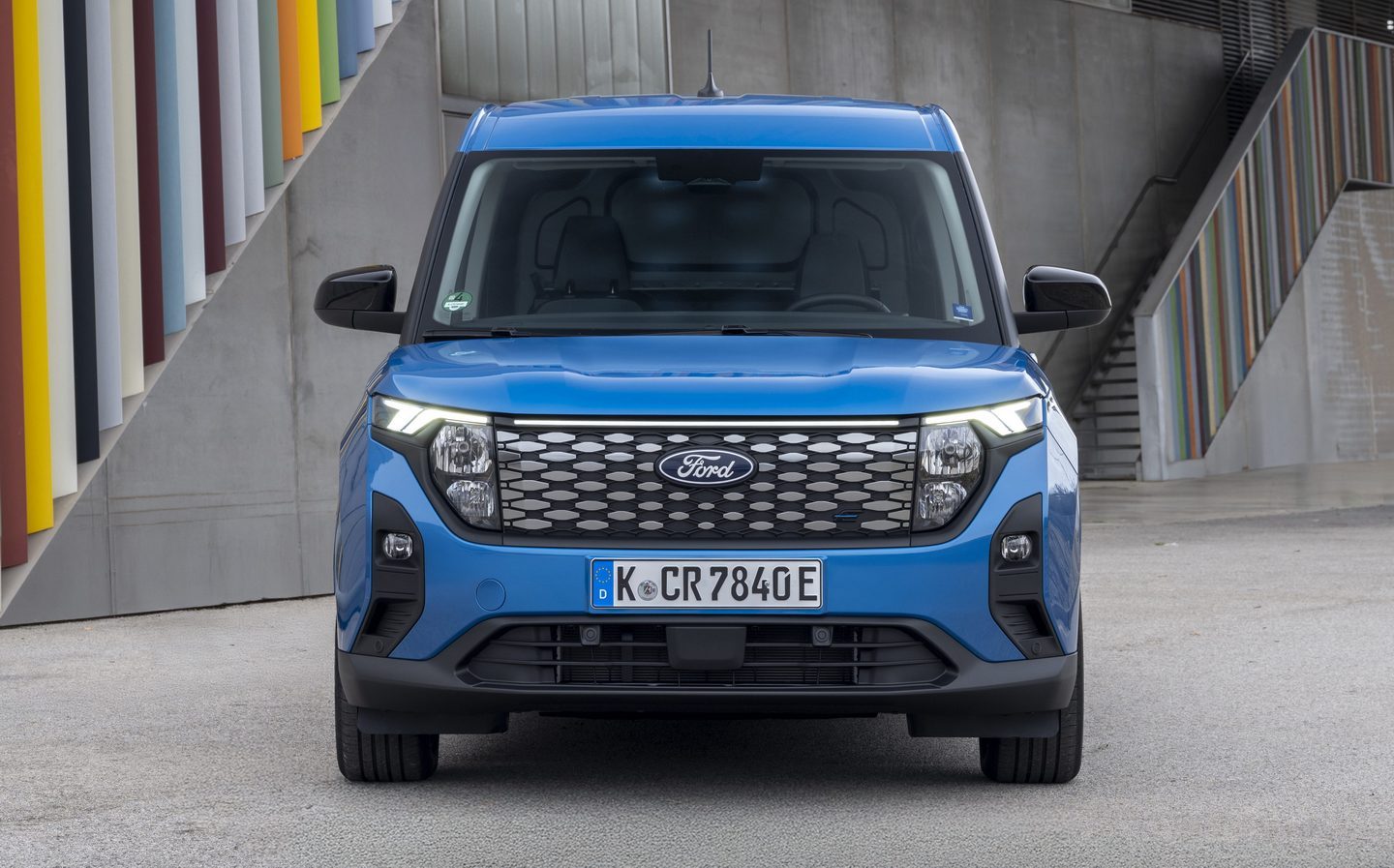Ford E-Transit Courier 2025 review: Compact electric van bolsters Ford’s eco creds ... for a price
Try and avoid the passenger seat if you can
One way that businesses can easily decarbonise in these environmentally focused times is to switch their commercial vehicle (vans & trucks) fleets from running on diesel power to electric. With the arrival of the new E-Transit Courier, Ford now has three of its four main van ranges equipped with a “zero-emission” model.
As the smallest van in its arsenal, the latest Transit Courier has evolved from its Fiesta origins — a moment of silence for that late supermini, please — to become a larger, squarer entity.
That does push it up in size towards the next van in the Ford family, the Transit Connect, and could potentially lead to some product overlap, but as there isn’t a pure-electric variant of the Connect as yet, the E-Transit Courier currently carves a niche of its own in Ford’s portfolio.
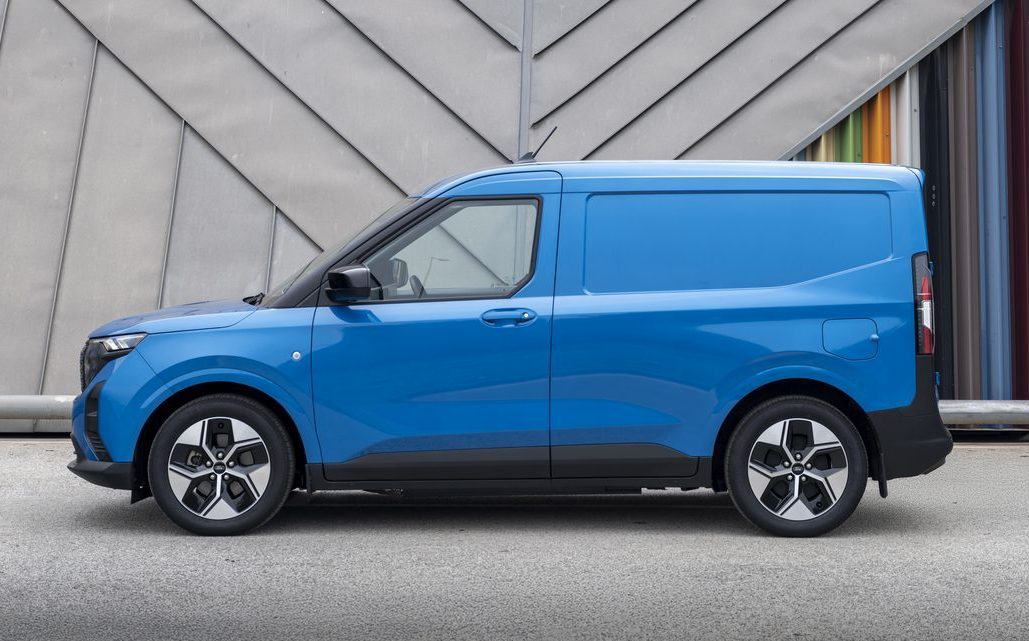
It is, however, only going to suit certain business types, due to the fact that the E-Transit Courier is not a long-range electric vehicle. It is fitted with a modest battery pack, with an energy capacity of 43kWh, which means that its one-shot range is claimed to be around 180 miles to a charge; that can in theory be moderately increased to 186 miles if the electric Courier is fitted with an optional 75mph top-speed limiter, which will suit many businesses but in reality makes little difference to the vehicle’s usability.
Clearly, this compact electric van is going to suit multidrop businesses working in urban and semi-urban environments the most, rather than being ideal for companies whose fleets are often pounding up and down the motorways of the UK between far-flung depots.
But if you need greater electric range, then there are always the larger E-Transit (now enhanced with a bigger battery pack) and E-Transit Custom models to consider instead.
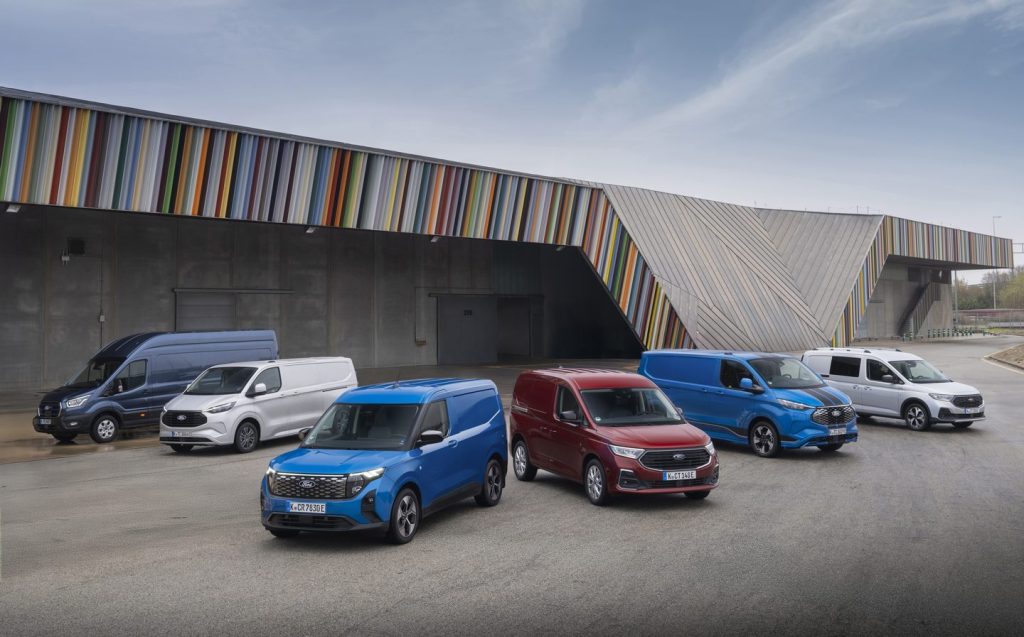
The Courier, though, is quite a good-looking thing in the grand scheme of commercial machines. Its angular styling was said to be inspired by the looks of an SUV, and as the electric model is only sold in the middle two trims of Trend and Limited, it also comes with a striking full-width light bar at the front.
The Limited spec as tested even sits on attractive 17in alloy wheels, offset by a choice of body colours that include (among the expected white, grey, silver and black) some brighter shades like red, green and this Digital Aqua Blue.
Inside, things are even better… for the driver, at least. A very car-like cabin in appearance is also reasonably car-like in terms of ergonomics, build quality and material finish, accepting there are some hard-wearing and hose-down plastics in key areas of the cockpit. One can’t help envisaging an old, sun-faded copy of a redtop newspaper, McDonald’s wrappers and some discarded Costa cups sliding around wildly on the shiny-topped dashboard.
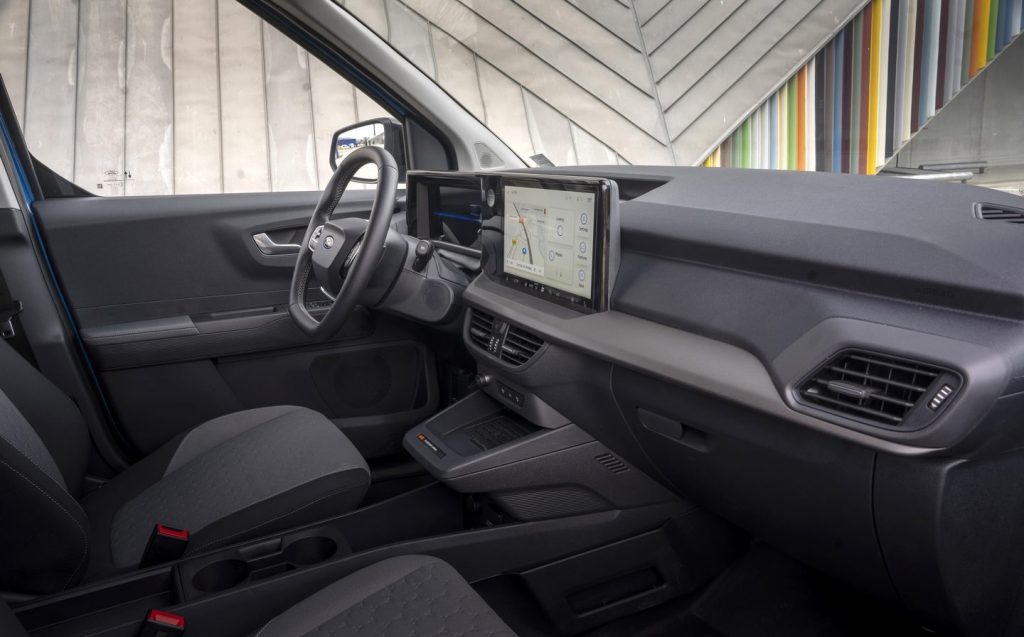
But the full 12in Sync 4 infotainment system plus digital instrument cluster is a nice touch and operates reasonably well. Our test version was even fitted with luxuries such as radar cruise control, split-zone climate and heating elements for all of the steering wheel, seats and windscreen.
Beyond the fit and finish, there are useful storage zones dotted throughout the cab, including a weird ledge-like extrusion up on the headlining, but the passenger seat is bizarrely cheap-feeling and uncomfortable compared to the sculpted seat behind the wheel. The centre of its backrest even feels slightly convex, like it is permanently trying to tip you out of the chair itself. You basically don’t want to be the driver’s mate in an E-Transit Courier, in our experience.
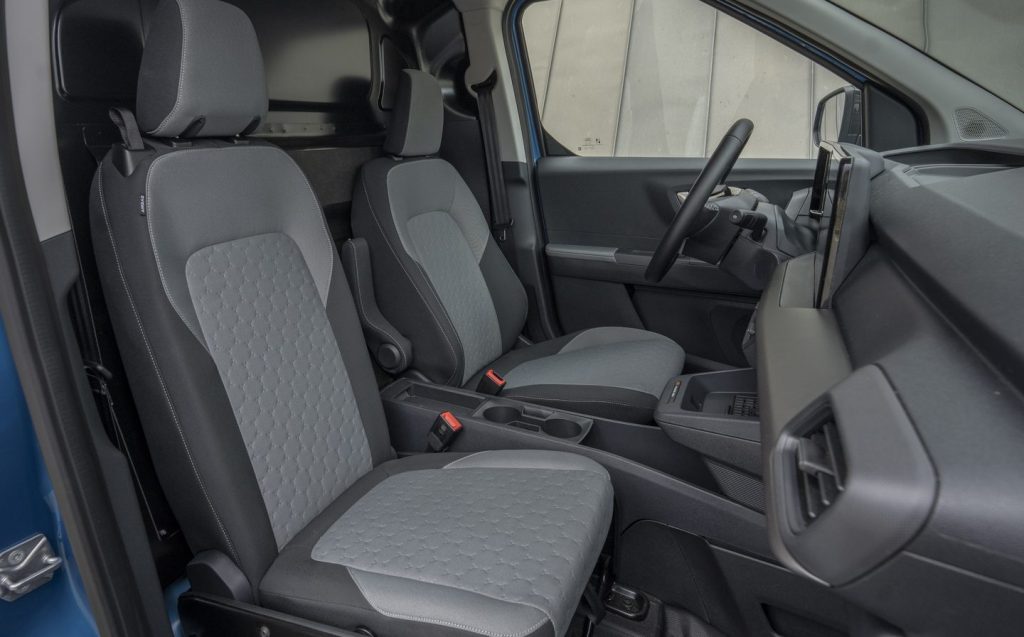
More importantly, the cargo area is competitive for this class of small van, with a large sliding side door allowing for easy access from the kerb, and a asymmetrically split “barn” doors at the back further facilitating ease of use.
The Ford will hold up to three cubic metres of materials in the back, with a payload approaching 700kg in this specification. Bizarrely, that’s considerably more than a high-roofed, long-body E-Transit can carry, due to gross vehicle weight (GVW) limits. The maximum towing weight is also 750kg on the small E-Transit Courier, which is a useful amount for commercial purposes.
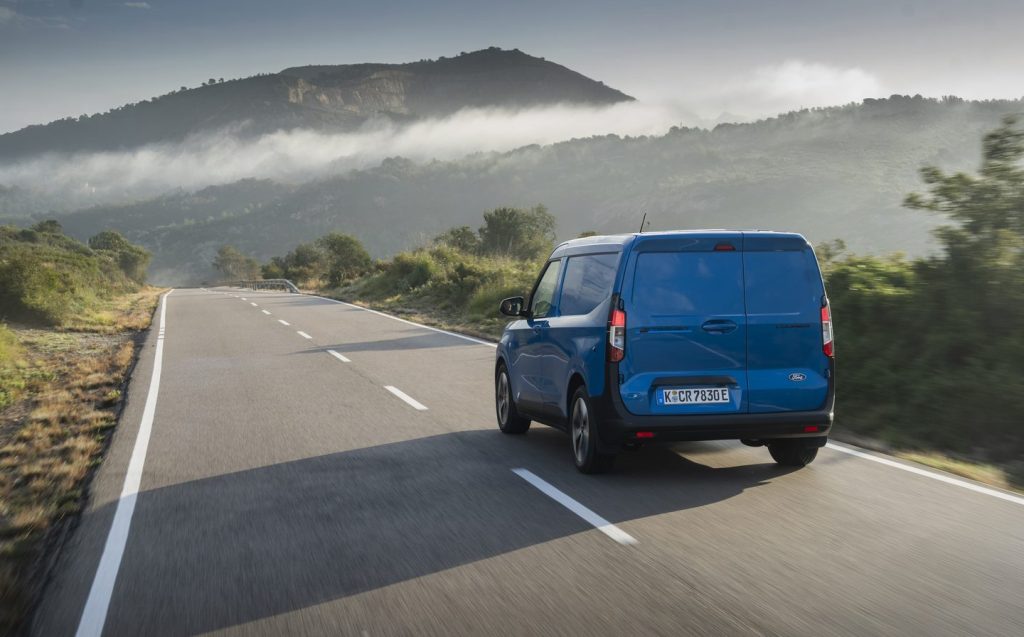
Where the real benefit of the E-Transit Courier comes to the fore is in the comfortable and sophisticated way it drives. It handles reasonably well, with crisp steering, lots of grip and a sense of impressive body control. Which is very welcome, but in truth vans don’t really need to be agile and exciting in the corners — no matter how aggressively driven by their operators.
Instead, the major benefit of the electric drivetrain in the Courier is how effortless it is to operate. The usual one-speed auto you’d find on any EV is fitted to the van, so you click the rotary drive selector into D, then easily control the speed of the van with the progressive accelerator pedal, decently calibrated regenerative braking and, should you need them, nicely responsive friction brakes. You really don’t need to worry about anything else.
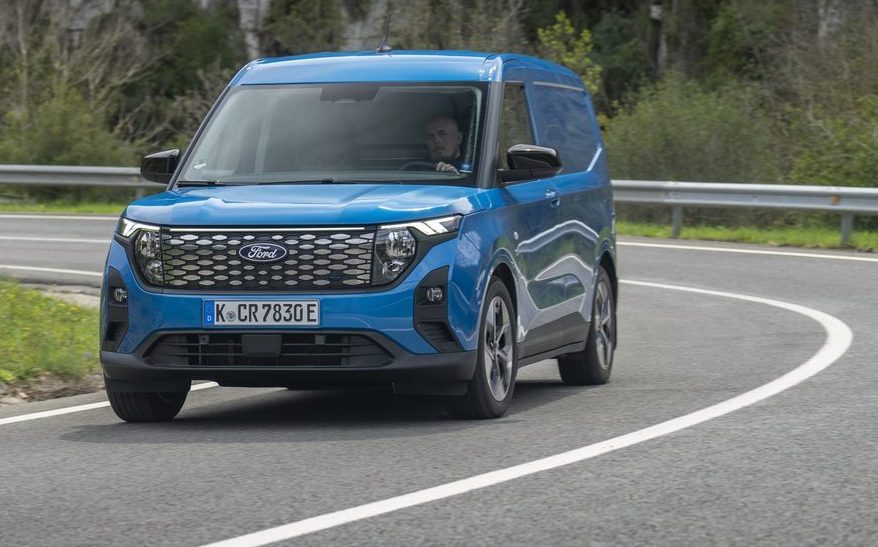
With 134bhp and an (empty) kerb weight of more than 1.5 tonnes, the E-Transit Courier is not exactly quick, but its instant-access torque (twisting force) of 214lb ft makes it zippy and nimble in traffic, able to exploit gaps at junctions and roundabouts that a low-powered turbodiesel equivalent simply wouldn’t be able to.
It shouldn’t even require a lot of downtime, which’ll be music to the ears of fleet managers looking to switch from diesel to electric power, partly because EVs tend to be more reliable and require less servicing, but also due to quick charging. The E-Transit Courier has a maximum DC rapid charging rate of 100kW that will see its modest battery go from 10-80 per cent charge in just 23 minutes. An 11kW AC charger, meanwhile, means a full 0-100 per cent top-up on a three-phase wallbox will take five hours 18 minutes — which means a full battery every morning.
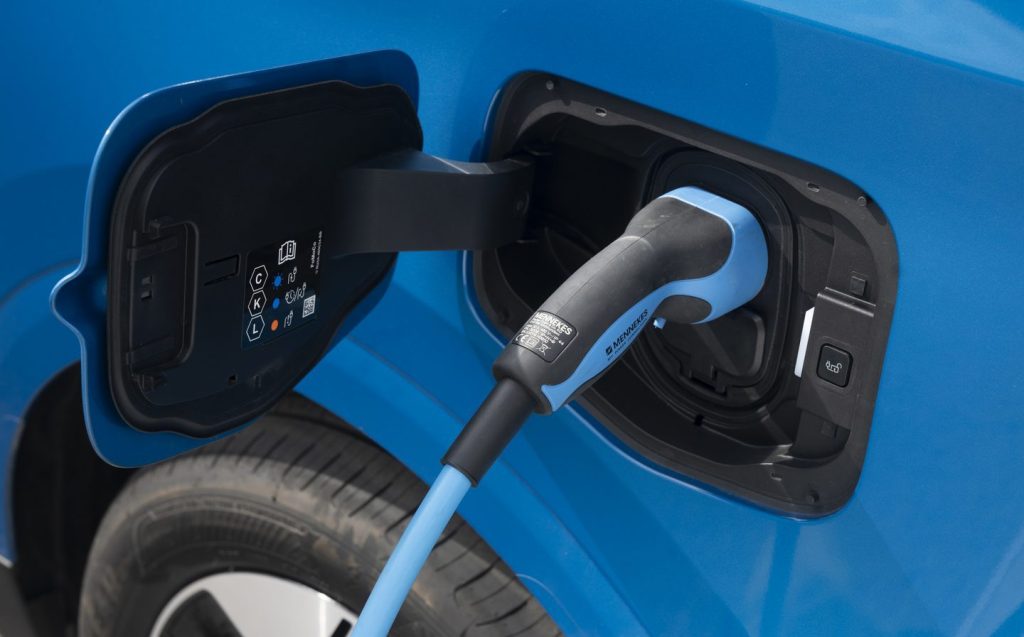
Ford quotes 35 per cent lower maintenance costs in the longer term, and mains electricity is cheaper than diesel. It’s just a shame, then, that going green is a relatively expensive affair up front.
Because where a bog-basic, “UN-spec” Ford Transit Courier 1.5 diesel in minimalist Leader spec (white paint, black bumpers, steel wheels) starts from £16,200 excluding VAT, this Limited model EV comes in just shy of £30,000. Multiplied across many units on a fleet, decarbonising your vans is going to need some serious outlay in the initial stages, that’s for sure.
Of course, as we’ve already said, there are other options if you want an electric Ford van, including the superb E-Transit Custom.
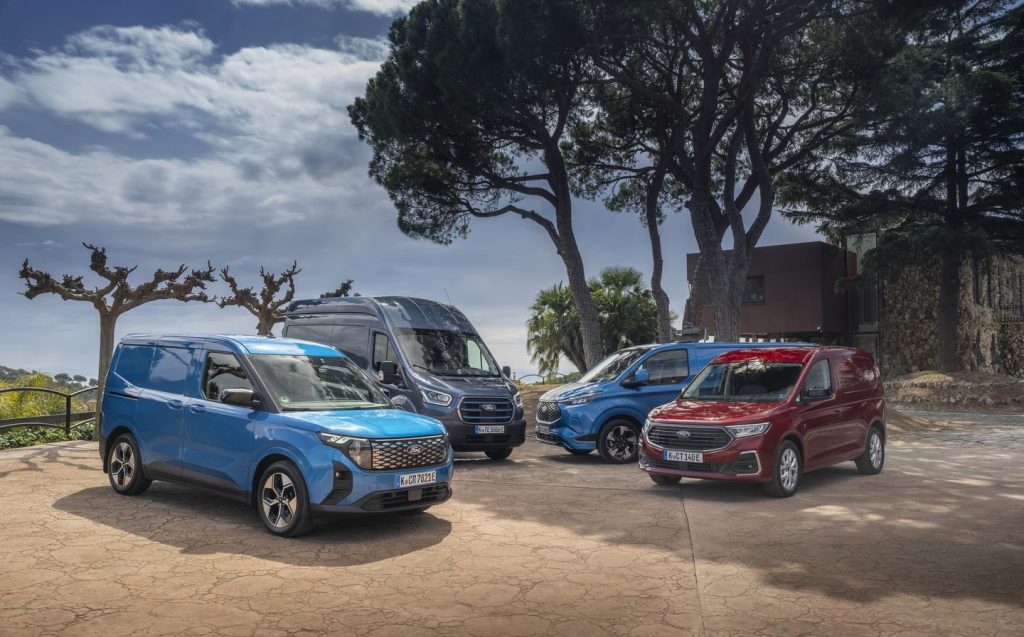
The upgraded, full-fat E-Transit’s bigger battery takes it up to a theoretical 250-mile range, which is impressive, and so is its power output: it delivers 265bhp to its rear wheels.
Driving the mighty L4H3 (it’s long and tall, basically) E-Transit with the 89kWh battery — a vehicle measuring more than 6.7 metres from tip to tail and almost 2.8 metres tall — is a wonderful experience. It gives you an imperious seating position, and through the combined use of its big door mirrors, crystal-clear rear-camera system and light, accurate steering, piloting this leviathan of a Ford van is surprisingly easy and unintimidating.
That said, to keep this model under the 3.5-tonne GVW, the reduced payload is going to restrict the E-Transit’s use for certain businesses, while it’s once again an expensive way into an electric van — costing almost £55,000 in this specification, before options.
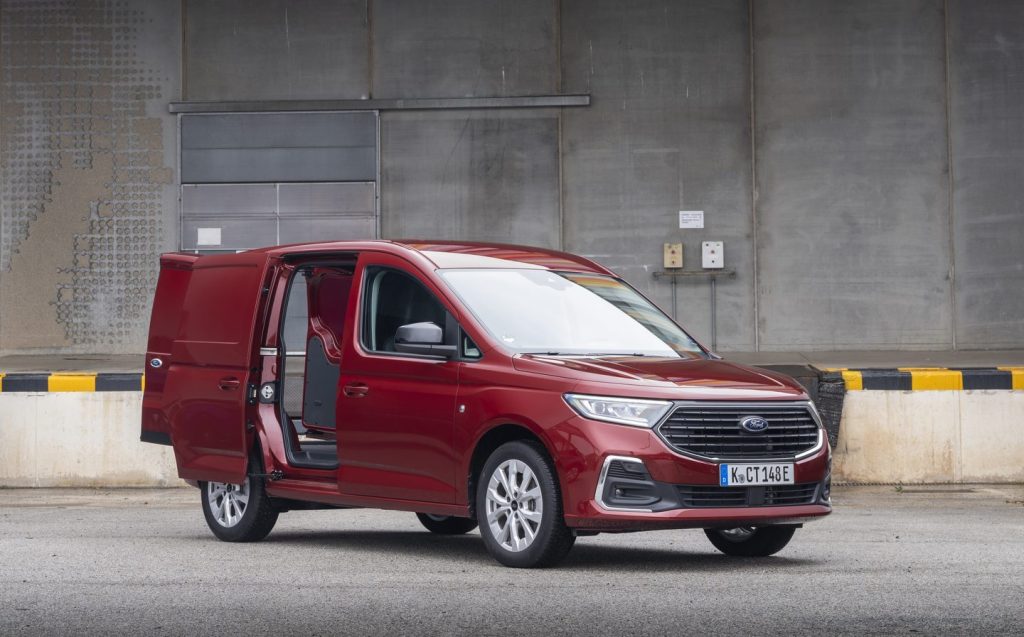
As a more affordable halfway-house, then, and also a van which’ll be ideal for long-range purposes, there’s always the Ford Transit Connect Plug-In Hybrid (PHEV). But there’s a catch to this range of vans, which is that while it wears Ford badges at both ends and the famous “Transit” nameplate, it’s the only one of the four modern-day Transit lines which isn’t actually Ford’s own work. Instead, it’s a lightly reskinned Volkswagen Caddy.
This shows in the cabin, where the Connect has major controls and a touchscreen infotainment system that operates like a Volkswagen, rather than a Ford, and that means it’s a little fiddlier and more awkward to use.
It also uses the Volkswagen Group’s 1.5-litre petrol PHEV drivetrain, which is nice and powerful with 148bhp, but can be a little raucous at higher revs and it does need some working to keep up with traffic flow.
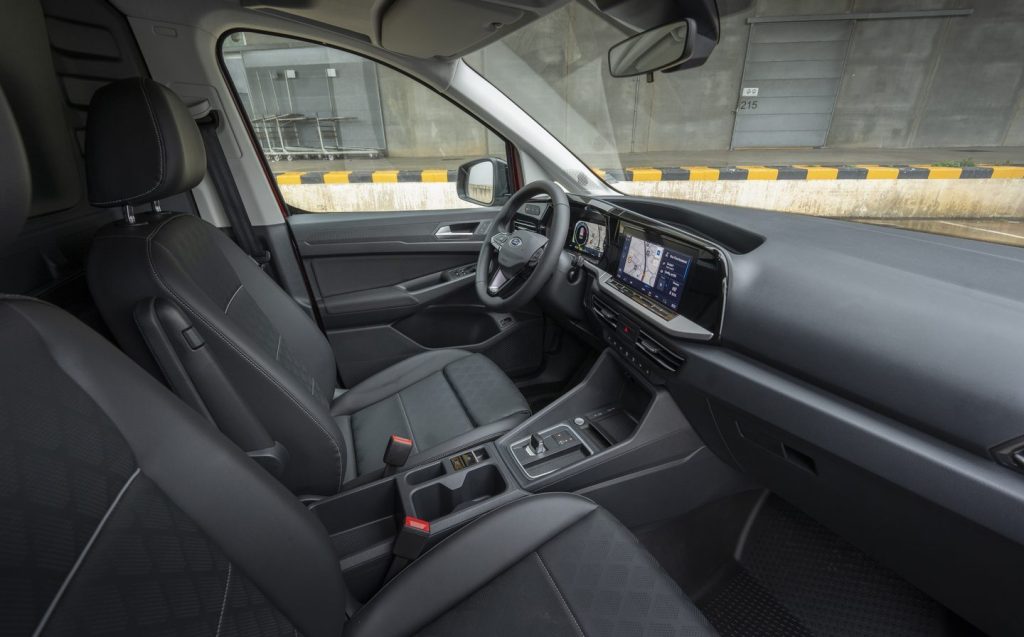
Nevertheless, it’s still a likeable van with a high-quality interior and neat styling, especially in Active trim, and there’s also the supremely clever ‘FlexCab’ arrangement. This puts a second row of seating in the van, which obviously trims its cargo space with all seats in use, but the rear bench easily folds upwards and forwards in one swift movement to form a “bulkhead”, returning the Connect to a de facto two-seater and giving it greater cargo capacity again.

So, with PHEVs and EVs littered throughout all of Ford’s main van ranges in 2025, there are plenty of options for commercial users looking to reduce their fleet’s tailpipe emissions. And the latest addition to the fold, the smart little E-Transit Courier, is arguably the best of the bunch — if its short-range capabilities fit your business’ needs, that is.
Related articles
- If you were interested in our review of the Ford E-Transit Courier, you may want to read our review of the E-Transit Custom, too
- Want to know what the best-selling cars in the UK are?
- And make sure you read our Ford E-Transit review too
Latest articles
- F1 2025 calendar and race reports: The Formula One season as it happens
- Extended test: 2024 Renault Scenic E-Tech review
- Smart #5 2025 review: Not a high five, but the best Smart for years
- BMW iX xDrive45 review 2025: Divisive looks remain but updated electric SUV is otherwise superb
- Aston Martin Vantage Roadster 2025 review: Still hardcore but with added pose factor
- Updated Skoda Enyaq vRS matches 0-62mph time of Czech firm’s fastest-ever car
- Long Way Home review — Ewan McGregor and Charley Boorman hit the road again
- ‘I was a tear-soaked mess’ — Richard Hammond opens up on his last Top Gear show during new race with James May
- Best-selling cars 2025: The UK’s ten most popular models of the year so far


